- Business Plan and Analysis: Aquaberry Private Limited Case Study
- 1. Company Overview
- 1. Legal structure
- 2. Business Description
- 3. Business Aims and Objectives
- 2. Products and Service offerings
- 1. Type of product and service offering
- 2. Core USPs
- 3. Competitive and Market analysis
- 1. Market Size
- 2. Market Segmentation
- 3. SWOT analysis
- 4. Porter's Five Forces
- 4. Business Strategy
- 1. Marketing mix
- 2. Growth Strategy
- 5. Operating plan
- 1. Location
- 2. Resources required
- 3. Suppliers
- 6. Financial plan
- 1. Projected income statement
- 2. Projected Balance sheet
- 3. Projected cash flow
- 4. Ratio analysis
- 5. Conclusion
- 7. Recommendations
- 1. Conclusion
- 2. Recommendation
- 9. References
Business Plan and Analysis: Aquaberry Private Limited Case Study
1. Company Overview
Aquaberry Private Limited is a UK-based sole proprietorship operating as a fast-fashion brand with a strong commitment to sustainability. Registered under a simple legal structure, the business benefits from tax deductions while managing its own financial and data security obligations with minimal paperwork.
Specializing in modern, trendy apparel, Aquaberry stands out by using eco-friendly materials and sustainable production methods. Each purchase contributes to environmental conservation, with a tree planted for every item sold. The brand offers versatile, reversible clothing in an inclusive size range (XXS to 8XL), ensuring both style and sustainability.
Aquaberry’s core mission is to revolutionize fashion by blending affordability, trend-driven designs, and eco-conscious practices—proving that style and environmental responsibility can coexist. Through its unique "one garment, one tree" initiative and innovative product offerings, the company aims to redefine fast fashion while promoting a greener future.
1. Legal structure
Aquaberry Private Limited is the sole proprietary business registered in the UK. The owner of Aquaberry is responsible for all its profit and loss. This company has spent money on federal fees, taxes, business equipment leases, office space, banking fees and different professional services (Davies, 2020). But being a sole proprietary business it received a tax deduction. The company protects its personal and professional data on its own. The paperwork for the company is very little as it is a sole proprietary business.
2. Business Description
Aquaberry Private Limited is a fast pace fashion brand. It is synonymous with modern trendy clothes. It ensures that it uses environmentally friendly colours and clothes to prepare dresses. One more thing they ensure that -every cloth is linked to a tree, which means when a customerbuys a cloth a new tree will be planted. In sum, they are protecting the environment along with the business.
3. Business Aims and Objectives
Aquaberry’s main aim is to produce trendy clothes with sustainable cotton, which will be reusable as well as environmentally friendly. The size of the cloth varies from XXS to 8XL. Their clothes can be worn on both sides.
2. Products and Service offerings
1. Type of product and service offering
Aquaberry offers different clothes for every season. They have a huge range of clothes for both females and males. They also offer clothing for kids. Their main products are t-shirts, hoodies, gym wears and sports wears. Aquaberry provides prints of different pop culture heroes and anime heroes. They offer online and offline services.
2. Core USPs
Aquaberry mainly forced on sustainable clothing and customization. They offer 3D prints on their clothes according to customers' needs. Customer can choose their cloth colour as well as the printing colours and the design. Customers can add a tagline of their choice on their clothes.
3. Competitive and Market analysis
1. Market Size
Aquaberry mainly targets men and women between the age group of 18 to 30. Aquaberry produces clothes according to the choice of their target customers. Due to its good marketing strategy, Aquaberry has captured almost 40% of the fashion industry.
2. Market Segmentation
Market segmentation is the process of segmenting consumers into groups (Qadadeh and Abdallah, 2018). It helps Aquaberry to target different categories of buyers with different tastes, ages, gender, income, occupation and many more.
Demographic segmentation: Aquaberry has specialized products for different age groups of people. As its main customer is youth, they mainly prepare clothes according to the choice of youth. Aquaberry has a huge range of clothes for males and females both. They also have bisexual clothes. Their cloth ranges from moderate to high.
Geographic Segmentation-As Aquaberry a UK-based company, they are mainly making clothes for summer and winter (Tsiotas et al., 2018). Because in the UK summer, autumn, spring and winter are the four main seasons.
Behavioural Segmentation-As Aquaberry has more Generation Z and Millennial customers, they mostly make funky, trendy clothes with pop culture references (Arias-Molinares and García-Palomares, 2020). Along with this most of the people of the UK are Christian, keeping this in mind Aquaberry also produce clothes with religious values and quotes from Bibel.
Psychological Segmentation: Aquaberry mainly makes t-shirts, gym wears and hoodies for its target costumes. They are mainly school-going people, office-goers, and college students. Aquaberry makes clothes according to their psychology and their choice.
3. SWOT analysis
Strengths: Expertise and skilled employees and diversified product range. The company's designers keep tabs on the industry's latest trends and consumer preferences to come up with original products. They've got almost 200 people working to create fashionable clothing that appeals to people of all ages, races, and cultures (Benzaghta et al., 2021). The firm typically has an aim in creating designs for around 10 million goods every year. As a result, they have no trouble introducing new products.
Weakness: Poor technologies and limited machinery for operational process. Brand excels in graphic advertising but has a little budget for other conventional channels. They make garments for both women and young adults, although their focus is mostly on the latter demographic. Thus, they prefer digital media to more traditional types of advertising (Teoli et al., 2019). Although 'word of mouth' promotion works, a broader presence in print and broadcast media may increase sales even more.
Opportunity: Mergers and acquisition with other companies is one of the opportunities for the company. Given that keeping up with the ever-evolving world of high fashion might be a challenge for the brand, Aquaberry may also introduce some timeless collections. It will lessen the potential for financial loss when a currently popular trend becomes abruptly obsolete (Teoli et al., 2019). The company has the resources to create creative marketing strategies that reach the desired demographic through traditional and online media. Aquaberry’s innovative marketing approach may successfully attract more clients in the middle age range.
Threats: The company's brand recognition is somewhat lower than that of many of its key rivals. There are now a plethora of clothing manufacturers supplying the market with stylish garments at affordable prices. The company's success may be attributed to its innovative styles and low prices, but the company still faces challenges from the industry's intense rivalry (Teoli et al., 2019). They don't invest as much as they might in advertising, which means they don't reach as many potential buyers. Since then, several regional manufacturers have responded by producing low-quality knockoffs of their items. The sale and their credibility are both in jeopardy.
4. Porter's Five Forces
Competition among rivalries: Competition is high among the retailers. H&M and Zara are some of the rivalries of the company. : In the retail sector, where Aquaberry operates, competition is fierce. Having some healthy rivalries inside the company is quite beneficial. This is because there are so many options available, both in terms of name-brand clothing and generic substitutes (Alves et al., 2020). To maintain this level of power, Aquaberry employs a rapid fashion business approach that allows for widespread manufacturing and distribution. The primary areas of focus are the supply, pricing, and sales infrastructure.
Barging power of suppliers: The power of suppliers is high due to the high switching cost from one supplier to another (Welter et al., 2021). In terms of its suppliers, Aquaberry has a long-standing partnership. It's one of the things that sets it apart from other companies with more conventional business methods. Given its status as the world's leading fashion store, competition from other suppliers is minimal (Alves et al., 2020). There is a preference among suppliers to work with well-known clothes and apparel companies. Working with a company that has a worldwide presence and a track record of successful sales is more lucrative.
Bargaining power of buyers: Barging power of clients is high due to other companies in the relevant market. In the clothing and apparel market, where many comparable products exist, consumers have greater bargaining power than they used to have when dealing with well-established companies selling well-known brands. There is a lot of choice for the clients to choose from. Aquaberry's arsenal is strengthened by this formidable tool (Martadisastra and Faisal, 2021). In order to limit the influence of its consumers and the market as a whole, the company pushes the boundaries of innovation and differentiation in its designs and product offerings.
Product substitution: A lot of products of identical structure can be created which states high substitution of products. The success of clothing and apparel companies depends on their ability to articulate and convey distinct value propositions. Because of this, similar products now exist on the market. The emergence of replacement brands and their goods poses a significant challenge to Aquaberry. The brand responds to this pressure by remaining true to its fundamental philosophy of designs rooted in formal and semi-formal styles and also by exploring casualwear, streetwear, and even sporting.
New entrants threat: The factor is high for the organization as a lot of new enterprises are establishing their presence. Moreover, new entrants pose a danger to the industry as a whole and to Aquaberry’s competitive standing in particular. Other fast-fashion firms, like Shein and Zaful, entering the market shows how simple it is to get started selling clothes and accessories online (Martadisastra and Faisal, 2021). The impact of this danger on the business is around average. In spite of this competition, the company strives to maintain market dominance by sticking to its fast-fashion business model and fashion-forward ideology.
4. Business Strategy
1. Marketing mix
Product: Apparels consist of shirts, tops, shirts, and jeans
Place: Retail market in the UK and online sites will be used to promote the products
Price: Competitive pricing will be used to showcase the products
Promotion: The products will be promoted through social media advertisement.
2. Growth Strategy
Market penetration is a growth strategy that can be used by the company. With this strategy, the company can offer its products in established markets (Mariani et al., 2019).
5. Operating plan
1. Location
The plan will be operated in the physical locations in the UK retail market. The physical location can be a shopping mall and separate areas where the infrastructure can be developed.
2. Resources required
Infrastructure, manpower, and machinery are the resources that will be required for running the business in the physical locations in the country. Along with manpower and machinery, the organization will also be requiring technologies and digital devices.
3. Suppliers
Existing suppliers in the UK retail market are the ones on whom the organization will be focusing on in receiving raw materials and semi-finished products.
6. Financial plan
1. Projected income statement
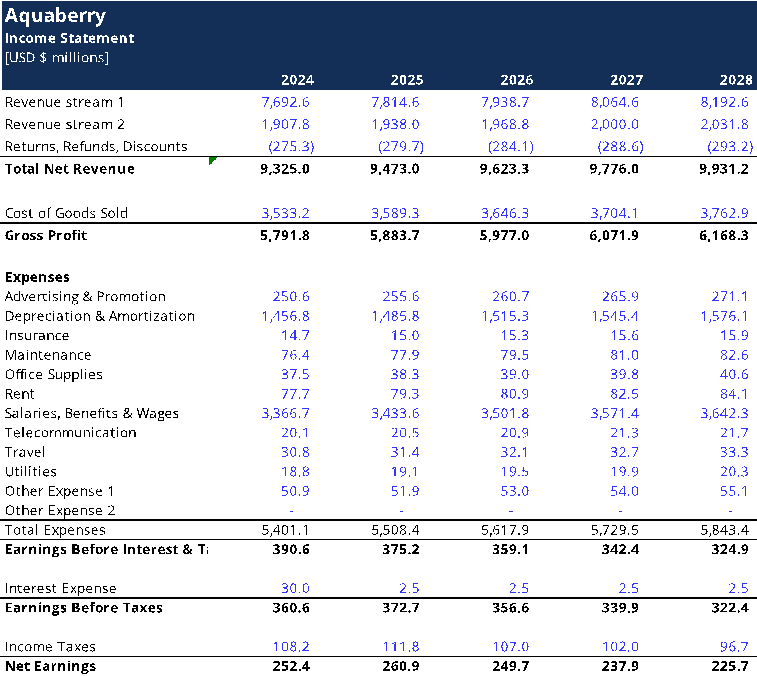
2. Projected Balance sheet
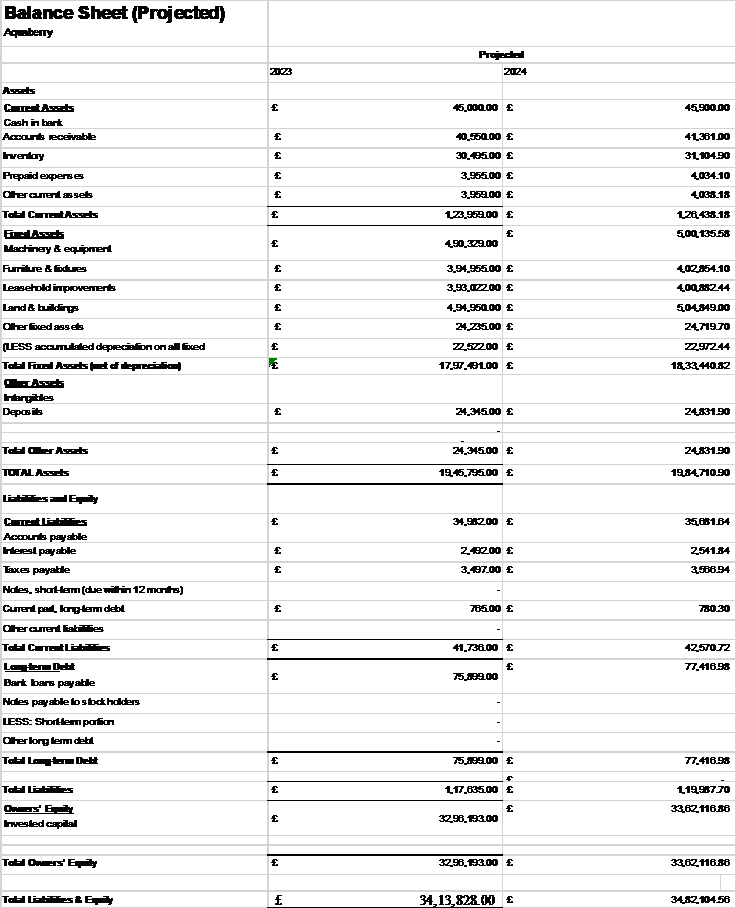
3. Projected cash flow
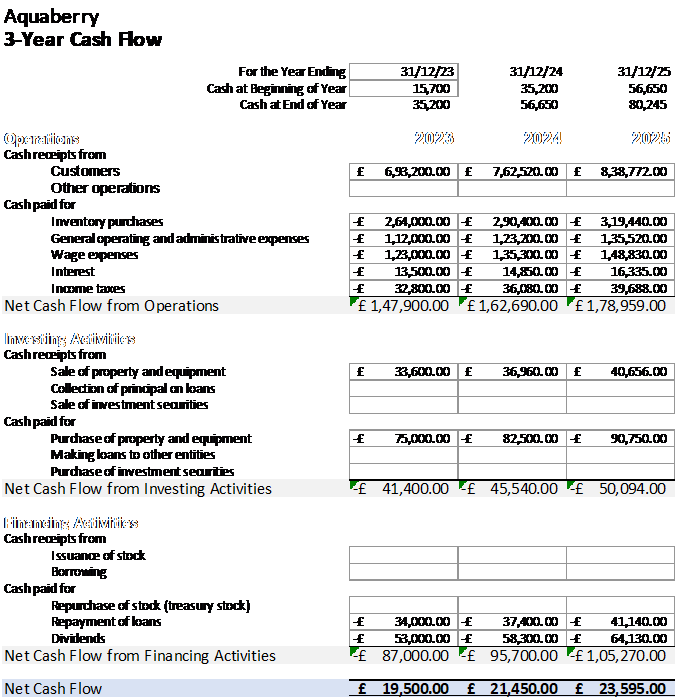
4. Ratio analysis
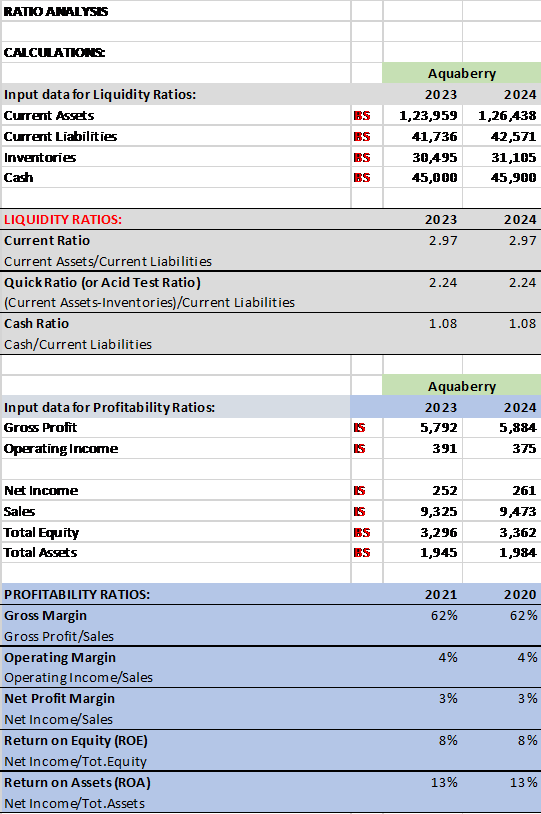
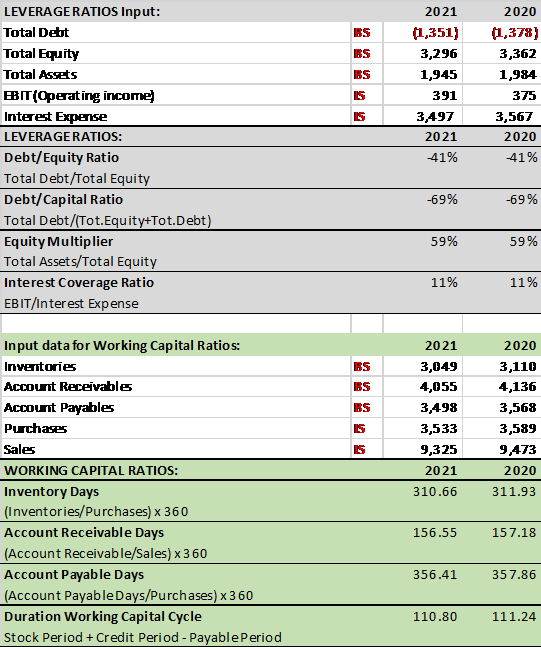
5. Conclusion
It is concluded that The firm saw a higher profit rate. As a consequence, the corporation's investors will get higher returns, and the return on capital utilised will increase. Most of the measures looked at above showed company to be in a significantly more beneficial and stable financial situation. Financial gear shifts are another sign of the company's finances becoming better. Being in charge of a business this size that handles such significant quantities of money is challenging and requires extreme prudence. To cover all expenses, the business may need outside financing. More salaries would be added if long-term debt was increased, which would be bad for the business's finances as a whole and as a competitor in the market.
7. Recommendations
1. Conclusion
It can be concluded that the organization can develop a presence in the retail market in the UK by merging with other companies. The competitive pricing strategy will allow the business to offer products with prices lower than its competitors. It has been found that the organization will also operate through online mode along with physical locations.
2. Recommendation
The organization can use sustainable materials in developing its product. In enhancing its image in the market the company needs to focus on different sustainability strategies. The organization can also arrange sustainability programs and events to create awareness among the employees and workers (Honig and Samuelsson, 2021). The enterprise can also use different AI tools to monitor the needs and requirements of the customers and clients in the UK retail market. The size requirements of the customers can be identified from online reviews and feedback. Therefore, the company can develop its website through the use of innovative technologies that will help Aquaberry in knowing the preference of the customers.
9. References
Alves, S.R., Ribeiro, H. and Saravanan, R., 2020. The digital transformation of traditional fashion retail for sustainable growth. Economic and Social Development: Book of Proceedings, pp.236-245.
Arias-Molinares, D. and García-Palomares, J.C., 2020. The Ws of MaaS: Understanding mobility as a service fromaliterature review. IATSS research, 44(3), pp.253-263.
Benzaghta, M.A., Elwalda, A., Mousa, M.M., Erkan, I. and Rahman, M., 2021. SWOT analysis applications: An integrative literature review. Journal of Global Business Insights, 6(1), pp.55-73.
Davies. Introduction to company law. Oxford University Press.
Honig, B. and Samuelsson, M., 2021. Business planning by intrapreneurs and entrepreneurs under environmental uncertainty and institutional pressure. Technovation, 99, p.102124.
Mariani, G., Bartoloni, L. and Morelli, D., 2019. Managing uncertainty in the start-up environment: is a business plan an incentive or a limitation?.Managing uncertainty in the start-up environment: is a business plan an incentive or a limitation?, pp.73-96.
Martadisastra, D. and Faisal, A., 2021. The Influence of Modern Retail-Suppliers Relationships on Suppliers Performance. Indonesian Management and Accounting Research, 19(2), pp.205-228.
Qadadeh, W. and Abdallah, S., 2018. Customers segmentation in the insurance company (TIC) dataset. Procedia computer science, 144, pp.277-290.
Teoli, D., Sanvictores, T. and An, J., 2019. SWOT analysis.
Tsiotas, D., Niavis, S. and Sdrolias, L., 2018. Operational and geographical dynamics of ports in the topology of cruise networks: The case of Mediterranean. Journal of Transport Geography, 72, pp.23-35.
Welter, C., Scrimpshire, A., Tolonen, D. and Obrimah, E., 2021. The road to entrepreneurial success: business plans, lean startup, or both?.New England Journal of Entrepreneurship.



